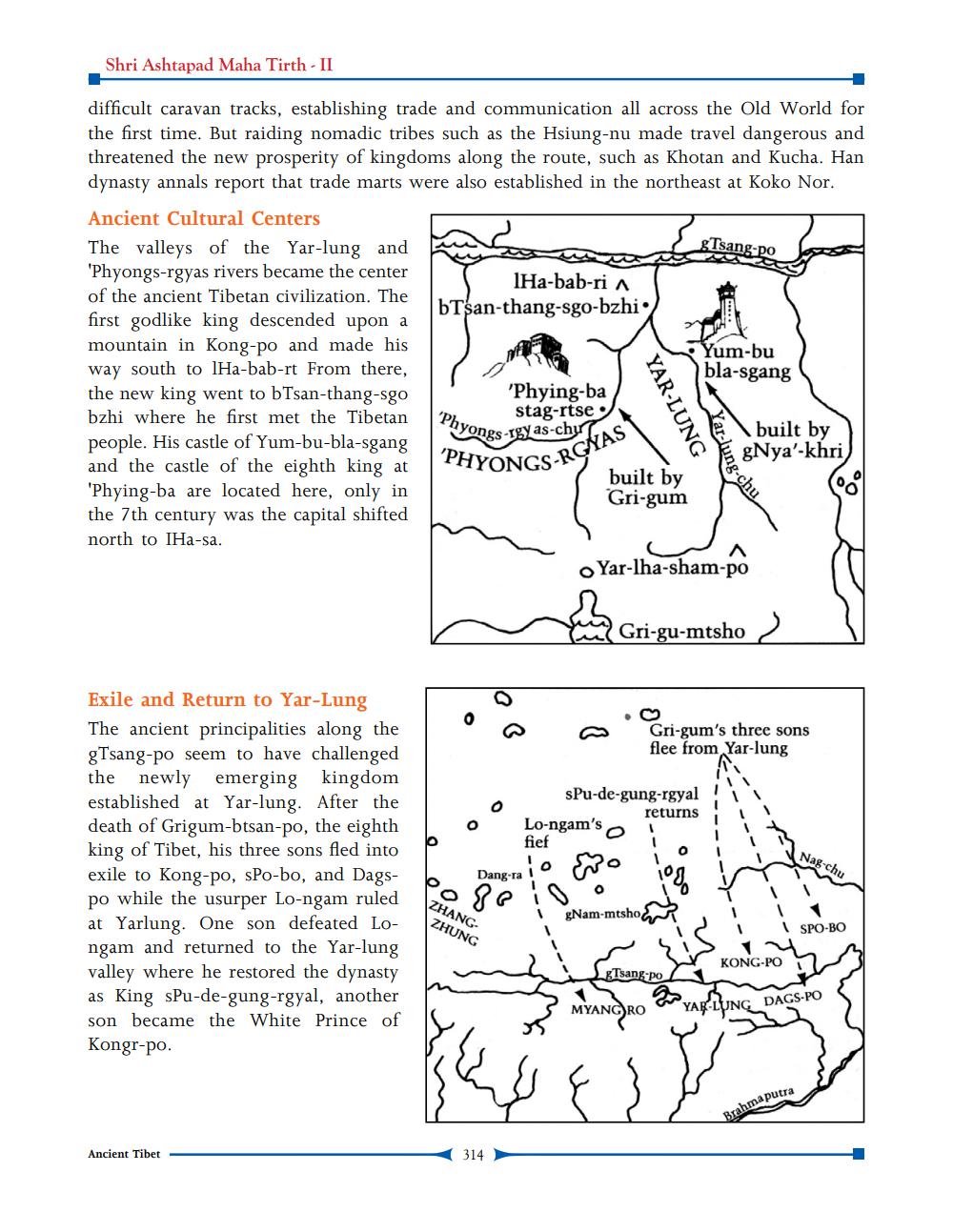________________
Shri Ashtapad Maha Tirth - II
gTsang-po
difficult caravan tracks, establishing trade and communication all across the Old World for the first time. But raiding nomadic tribes such as the Hsiung-nu made travel dangerous and threatened the new prosperity of kingdoms along the route, such as Khotan and Kucha. Han dynasty annals report that trade marts were also established in the northeast at Koko Nor. Ancient Cultural Centers The valleys of the Yar-lung and 'Phyongs-rgyas rivers became the center
IHa-bab-ri A of the ancient Tibetan civilization. The
bTsan-thang-sgo-bzhi • first godlike king descended upon a mountain in Kong-po and made his
Yum-bu way south to lHa-bab-rt From there,
bla-sgang the new king went to bТsan-thang-sgo
'Phying-ba bzhi where he first met the Tibetan
stag-rtse yongs-Igy as-chu GAS
built by people. His castle of Yum-bu-bla-sgang
EgNya'-khri and the castle of the eighth king at
'PHYONGS-RGY
built by 'Phying-ba are located here, only in
Gri-gum the 7th century was the capital shifted north to IHa-sa.
Yar-lha-sham-po
YAR-LUNG
4ng-chu
ri-gu-mtsho
Gri-gum's three sons flee from Yar-lung
sPu-de-gung-rgyal
returns Lo-ngam's
Lo-ngao
fief
Nag-chu
Exile and Return to Yar-Lung The ancient principalities along the gTsang-po seem to have challenged the newly emerging kingdom established at Yar-lung. After the death of Grigum-btsan-po, the eighth king of Tibet, his three sons fled into exile to Kong-po, sPo-bo, and Dagspo while the usurper Lo-ngam ruled at Yarlung. One son defeated Longam and returned to the Yar-lung valley where he restored the dynasty as King sPu-de-gung-rgyal, another son became the White Prince of Kongr-po.
Dang-la.
ZHANG ZHUNG
gNam-mtsh
SPO-BO
KONG-POT
nt
VCRO A
LUNG DAGS-PO
A PACES.PO 57
Brahmaputra
Ancient Tibet
314




